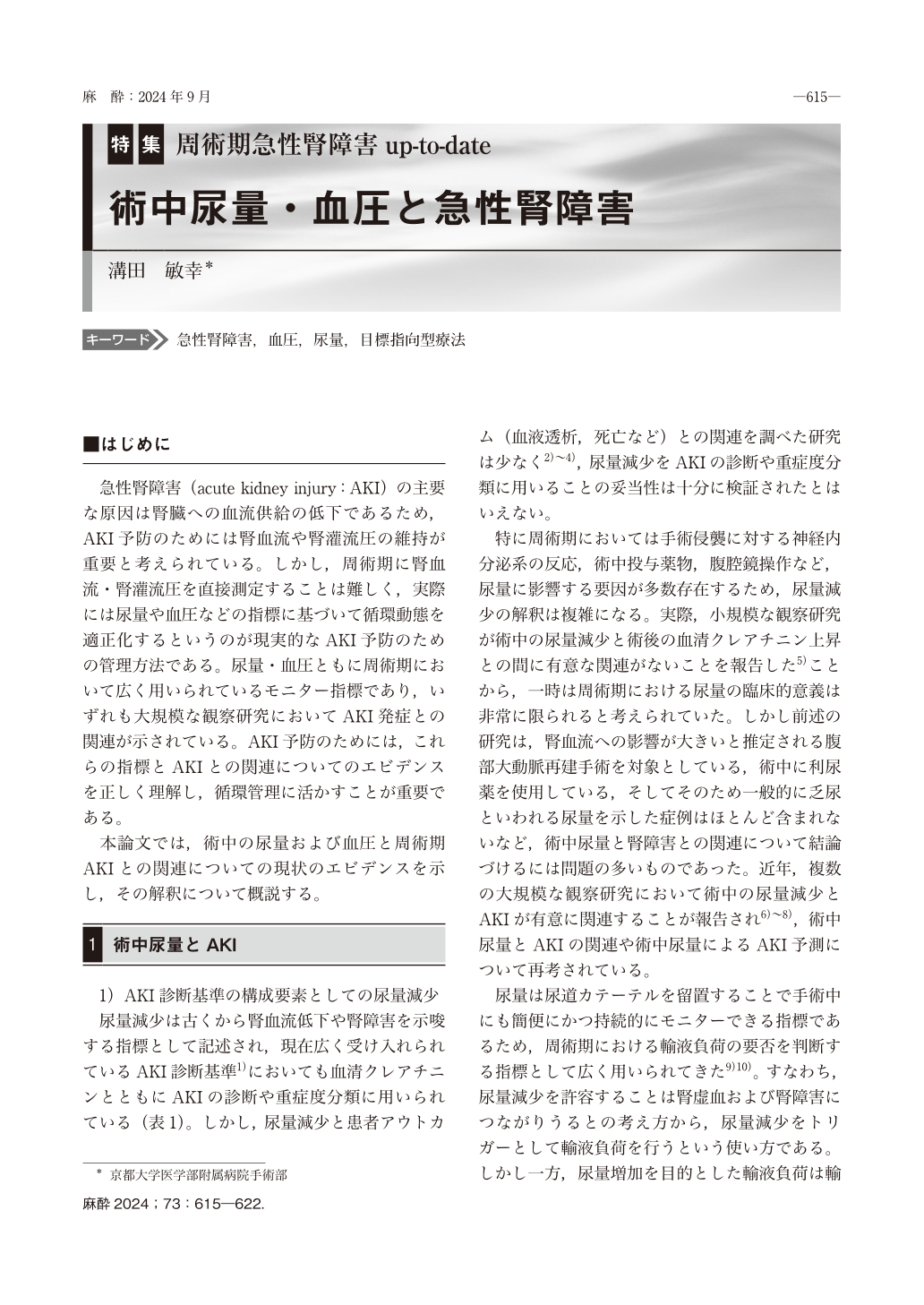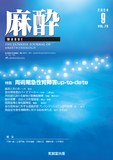Japanese
English
- 有料閲覧
- Abstract 文献概要
- 1ページ目 Look Inside
- 参考文献 Reference
はじめに
急性腎障害(acute kidney injury:AKI)の主要な原因は腎臓への血流供給の低下であるため,AKI予防のためには腎血流や腎灌流圧の維持が重要と考えられている。しかし,周術期に腎血流・腎灌流圧を直接測定することは難しく,実際には尿量や血圧などの指標に基づいて循環動態を適正化するというのが現実的なAKI予防のための管理方法である。尿量・血圧ともに周術期において広く用いられているモニター指標であり,いずれも大規模な観察研究においてAKI発症との関連が示されている。AKI予防のためには,これらの指標とAKIとの関連についてのエビデンスを正しく理解し,循環管理に活かすことが重要である。
本論文では,術中の尿量および血圧と周術期AKIとの関連についての現状のエビデンスを示し,その解釈について概説する。
Maintaining a patient’s renal blood flow and perfusion pressure is important for the prevention of acute kidney injury(AKI). However, because it is difficult to directly measure these two parameters during the perioperative period, a pragmatic management strategy for preventing an AKI is the optimization of widely used circulatory parameters such as the urine output and blood pressure. Intraoperative oliguria is significantly associated with the development of AKI, but when used alone the ability of this condition to predict AKI is poor. It is necessary to determine whether the intraoperative urine output in combination with other findings can aid in the early detection of AKI. Intraoperative hypotension is critical not only because it is associated with AKI development but also because it is a modifiable parameter. In fact, the avoidance of hypotension is recommended for the prevention of AKI. Moreover, the reported efficacy of goal-directed hemodynamic therapy using indices such as cardiac output and oxygen delivery for AKI prevention suggests that it is essential to optimize patients’ fluid management and improve tissue perfusion by using various hemodynamic parameters rather than simply maintaining blood pressure.

Copyright © 2024 KOKUSEIDO CO., LTD. All Rights Reserved.


